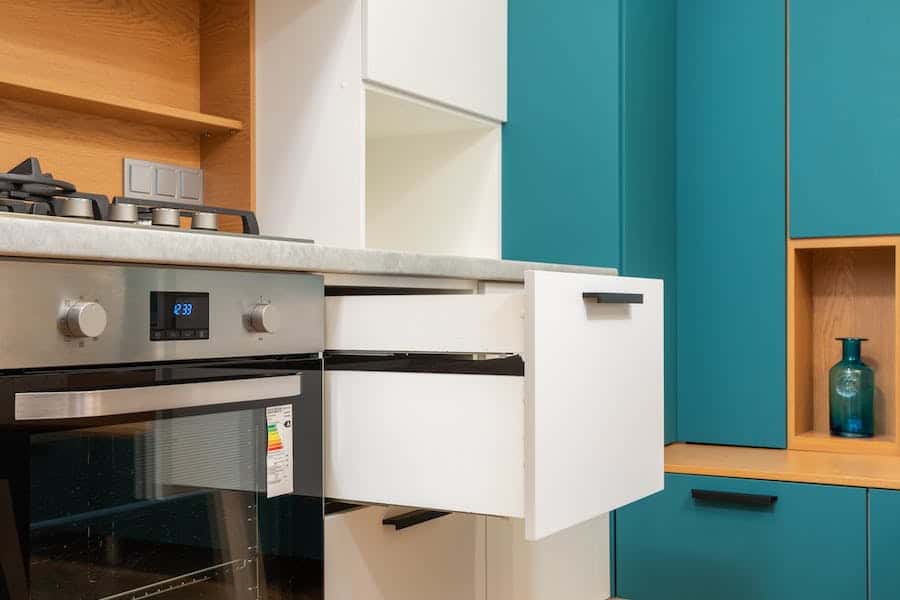Stainless steel cookware is a staple in many kitchens, known for its durability and versatility. Whether you’re searing, sautéing, or simmering on the stovetop, stainless steel pans excel. But what about using them in the oven? Are stainless steel pans oven-safe? This comprehensive guide aims to answer that question and provide you with essential information on stainless steel cookware’s compatibility with your oven. Understanding the nuances of stainless steel grades, temperature limits, and proper usage will empower you to make informed decisions in the kitchen, ensuring both the longevity of your cookware and the success of your culinary endeavors.
Are Stainless Steel Pans Oven Safe?
Yes, stainless steel pans are generally oven-safe. However, it’s essential to check the specific manufacturer’s instructions and the grade of stainless steel used in your pan. Different grades may have varying temperature limits. In most cases, 300-series stainless steel pans are safe for oven use at temperatures up to 500°F (260°C), while 400-series stainless steel may have lower limits. Also, consider the handles and lids, as they may not always be oven-safe. Always read the care instructions provided with your cookware to ensure safe and effective use in the oven.
Importance Of Knowing If Stainless Steel Pans Are Oven-Safe
Knowing whether stainless steel pans are oven-safe is crucial for several reasons:
Ensuring that your stainless steel pans are oven-safe is paramount to your safety in the kitchen. Using cookware not designed for oven use can lead to accidents, burns, or even fires. Understanding the oven safety limits of your pans is a fundamental aspect of responsible cooking.
Stainless steel cookware is an investment. Quality pieces can last for many years if cared for properly. Using pans in the oven beyond their safety limits can lead to warping, discoloration, and damage, thus shortening their lifespan. Being aware of their oven safety guidelines helps you protect and extend the life of your valuable cookware.
Many recipes, exceptionally professional or gourmet cooking, require a combination of stovetop and oven techniques. Knowing which stainless steel pans can safely transition from the stovetop to the oven allows you to follow recipes accurately and achieve the desired textures, flavors, and results.
Oven-safe stainless steel pans open a world of cooking possibilities. These pans are suitable for braising, roasting, broiling, and finishing dishes under the broiler. Understanding the oven compatibility of your pans enables you to explore these techniques, expand your culinary skills, and create a broader range of dishes.
Some non-stick coatings and handles on cookware can emit toxic fumes when exposed to high oven temperatures. Knowledge of which parts of your stainless steel pans are safe for the oven can help you avoid health hazards associated with the release of harmful substances.
Using oven-safe stainless steel pans eliminates the need for transferring food to different cookware or dishes when transitioning from stovetop to oven. This streamlines your cooking process, reduces the number of dishes to clean, and can be more energy-efficient, as it minimizes heat loss during the transfer.
Consistency is a hallmark of great cooking. Knowing that your stainless steel pans are oven-safe, you can use them confidently for various recipes without worrying about switching to alternative materials. This consistency contributes to the quality and repeatability of your culinary creations.
Oven-Safe Temperature Limits
Oven-safe temperature limits are a critical factor to consider when using stainless steel pans in the oven. These limits depend on the grade and composition of the stainless steel used in the cookware. Understanding these limits is essential to ensure the safe and effective use of your stainless steel pans in the oven. Here are some key points regarding oven-safe temperature limits:
Stainless Steel Grades: Stainless steel cookware is available in various grades, each with unique properties and temperature thresholds. The most common stainless steel grades used in cookware are 300-series (e.g., 304, 316) and 400-series (e.g., 430) stainless steel.
300-Series Stainless Steel: Cookware made from 300-series stainless steel is typically more heat-resistant and oven-safe than 400-series stainless steel. These pans can generally withstand oven temperatures of up to 500°F (260°C) or even higher, making them suitable for various cooking methods, including baking and roasting.
400-Series Stainless Steel: Pans made from 400-series stainless steel may have lower oven temperature limits. It’s crucial to consult the manufacturer’s instructions for specific temperature guidelines. These pans are generally best suited for stovetop cooking and lower-temperature oven use.
Tri-Ply And Multi-Ply Stainless Steel: Tri-ply and multi-ply stainless steel cookware, which consists of layers of different metals, including stainless steel, aluminum, and sometimes copper, often have higher heat tolerance. They can typically withstand oven temperatures in the range of 500°F to 600°F (260°C to 315°C).
Manufacturer Specifications: To determine the oven safety of your stainless steel pan, always refer to the manufacturer’s specifications and guidelines. Manufacturers provide detailed information about the temperature limits and recommended cookware usage.
Using An Oven Thermometer: For precision and safety, consider using an oven thermometer to monitor the actual temperature inside your oven. This ensures that you do not exceed the safe temperature limits of your stainless steel pans.
Handle And Lid Considerations: While stainless steel pans’ bodies may be oven-safe, their handles and lids might have different temperature limits. Some handles are made of plastic or rubber, which can melt or degrade at high temperatures. Be sure to check whether the handles and lids are oven-safe as well.
Advantages And Disadvantages Of Stainless Steel Pans In The Oven
Stainless steel pans are popular for many kitchen tasks, including oven use. However, like any cookware material, they have advantages and disadvantages when used in the oven. Here’s a closer look at these pros and cons:
Advantages Of Using Stainless Steel Pans In The Oven:
- Stainless steel pans are highly versatile, and their oven-safe properties extend their usability. You can use them for various cooking methods, from stovetop searing to oven roasting and baking.
- Stainless steel is known for its exceptional durability. It is resistant to rust, staining, and corrosion, making it a long-lasting option for oven use. Properly cared-for stainless steel pans can serve you for many years.
- Stainless steel pans distribute heat evenly across their surface, which is beneficial when cooking in the oven. This uniform heat distribution helps ensure that your dishes cook or roast consistently, producing well-cooked food.
- Stainless steel is non-reactive with acidic ingredients. You can safely cook dishes with tomatoes, citrus, or wine in stainless steel pans without fearing a metallic taste or discoloration.
- Stainless steel is relatively easy to clean and maintain. It is dishwasher safe, and many stains and residues can be removed with simple scrubbing and soaking.
- Unlike other pans, stainless steel pans do not have non-stick coatings that can degrade or release harmful fumes when exposed to high oven temperatures. This makes them a safer option for oven use.
Disadvantages Of Using Stainless Steel Pans In The Oven:
- Stainless steel pans tend to be heavier than other types of cookware, such as non-stick pans or cast iron. This can make transferring from stovetop to oven challenging, especially with larger pans.
- Quality stainless steel cookware can be relatively expensive compared to some other materials. While it is a long-term investment, the upfront cost can be a drawback for budget-conscious consumers.
- While stainless steel is easy to clean, it can be prone to discoloration or stubborn stains if not properly cared for. You may need to invest time and effort in maintaining its appearance.
- Stainless steel does not retain heat as effectively as materials like cast iron. This can be a disadvantage when you want to keep your dishes warm after removing them from the oven.
- The handles of stainless steel pans can get hot in the oven, making it essential to use oven mitts or pot holders. Some cookware models have handles that are designed to stay cooler.
Tips For Safely Using Stainless Steel Pans In The Oven
Safely using stainless steel pans in the oven is essential to prevent accidents, preserve your cookware, and achieve delicious results. Here are some tips to ensure the safe use of stainless steel pans in the oven:
Check The Oven-Safe Temperature Limits:
Always verify the manufacturer’s guidelines for your stainless steel pan’s oven-safe temperature limits. Exceeding these limits can lead to damage or safety hazards.
Use Oven Mitts Or Pot Holders:
Stainless steel pans and handles can become extremely hot in the oven. Always wear oven mitts or use pot holders when handling them to avoid burns.
Preheat Gradually:
When using stainless steel pans in the oven, preheat the oven gradually. Rapid temperature changes can cause thermal shock and potentially damage the cookware. Gradual heating helps prevent warping.
Position Pans Properly:
Place stainless steel pans in the center of the oven, ensuring adequate space between pans and oven walls for proper air circulation. Avoid placing pans too close to the oven’s heating elements.
Monitor Cooking Progress:
Keep an eye on your dishes while they are in the oven. Use an oven light or window to check their progress without opening the oven door, which can cause temperature fluctuations.
Avoid Sudden Temperature Changes:
Avoid placing stainless steel pans on cold or wet surfaces when removing them from the oven. A rapid temperature change can cause warping or damage. Instead, use heat-resistant trivets or cooling racks.
Final Words
Stainless steel pans can be a valuable addition to your kitchen, offering versatility, durability, and excellent cooking results. Knowing their oven-safe temperature limits, using proper precautions, and following care guidelines are essential steps in harnessing their potential. Always prioritize safety by using oven mitts or pot holders, checking manufacturer specifications, and being mindful of hot handles. Preheat your oven gradually, position the pans correctly, and avoid sudden temperature changes. Monitor your dishes while in the oven, and clean and store your stainless steel pans appropriately to maintain their quality.
FAQ’s
What Is The Maximum Oven Temperature For Stainless Steel Pans?
The maximum oven temperature for stainless steel pans can vary based on the grade of stainless steel and the specific pan design. Generally, 300-series stainless steel pans can handle temperatures up to 500°F (260°C), while 400-series stainless steel may have lower limits. Refer to manufacturer instructions for precise temperature guidelines.
Can I Use Stainless Steel Lids In The Oven?
It depends on the lid material. Stainless steel lids are typically oven safe, but some cookware sets may include lids with heat-resistant handles or knobs with lower temperature limits. Check the manufacturer’s instructions to confirm the oven safety of the lids.
How Can I Prevent Food From Sticking To Stainless Steel Pans When Baking In The Oven?
To prevent sticking, use cooking sprays, parchment paper, or foil as liners in your stainless steel pans when baking. Properly preheating the pan and using the right amount of oil or butter can also help reduce sticking.





















